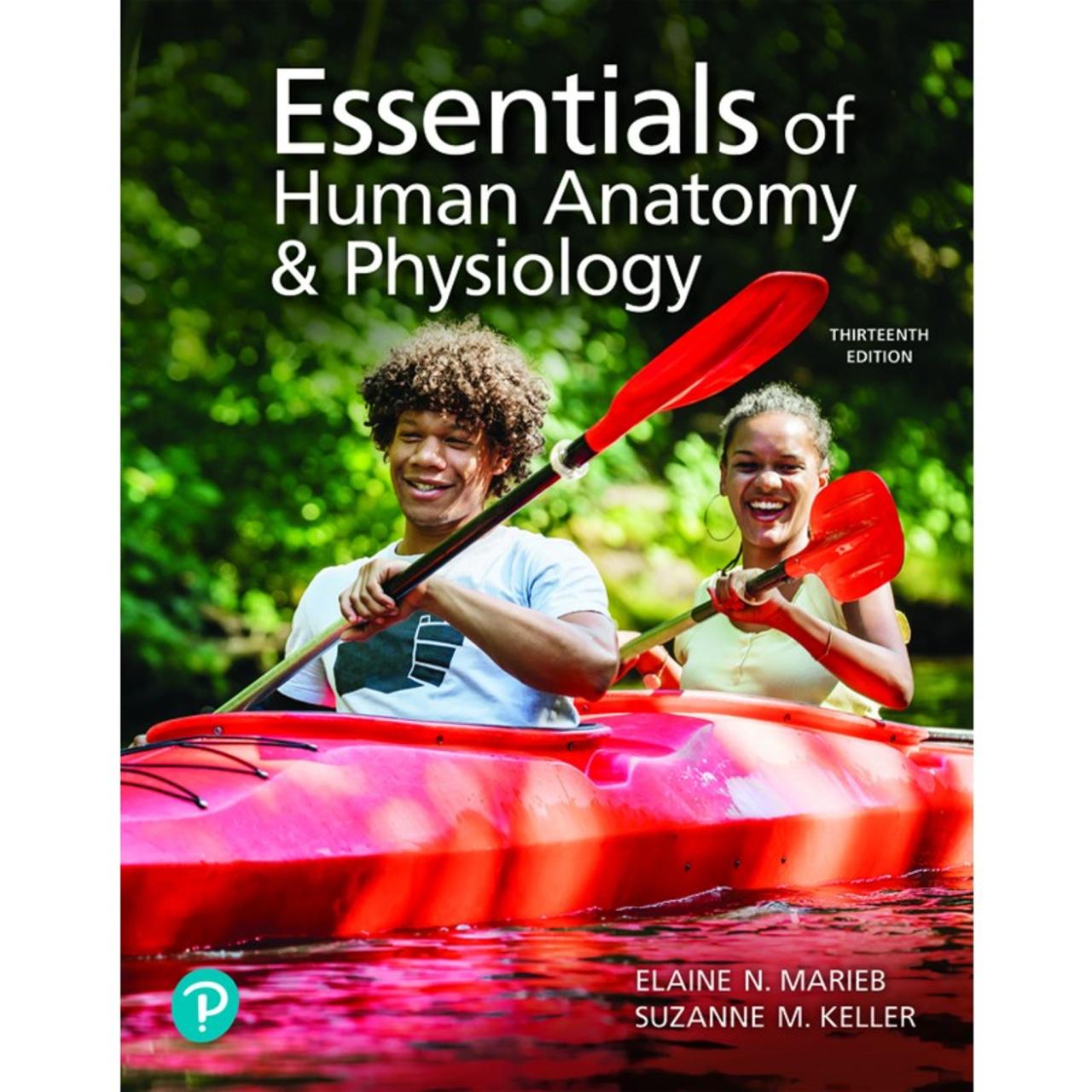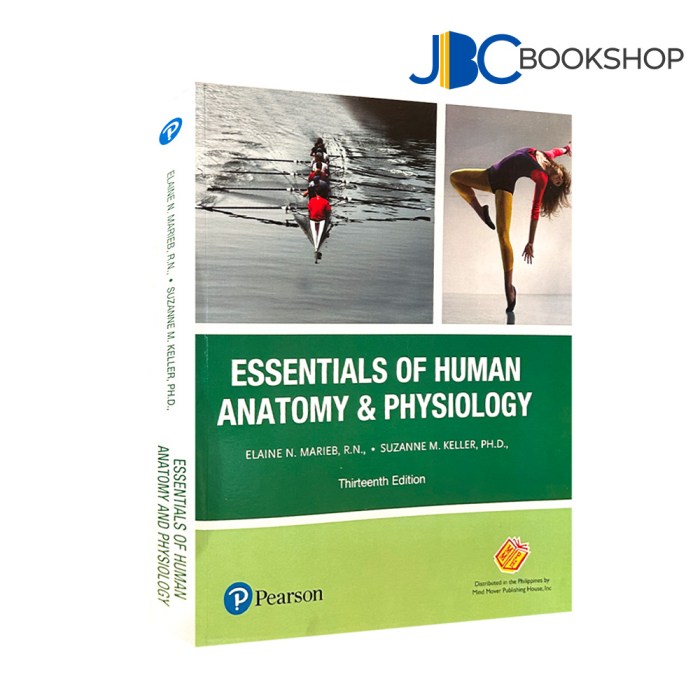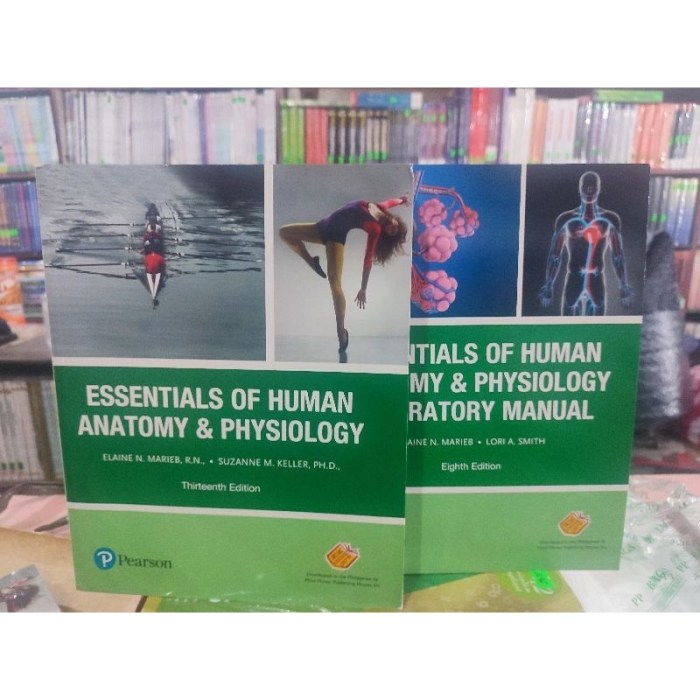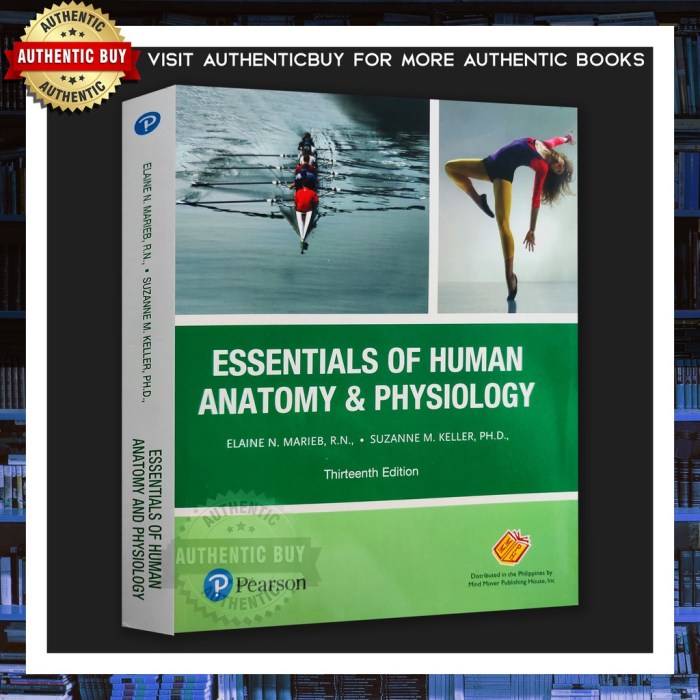Marieb Anatomy and Physiology 13th Edition, a comprehensive textbook, offers a captivating exploration into the intricate workings of the human body. Its in-depth content and innovative pedagogical approaches empower students with a profound understanding of anatomy and physiology, fostering their success in the field of healthcare.
This 13th edition unveils groundbreaking features that revolutionize the learning experience. Its logical organization and seamless integration of technology create an engaging environment where students can actively participate in their own learning journey.
Marieb Anatomy and Physiology 13th Edition Overview

Marieb Anatomy and Physiology, 13th Edition is a comprehensive textbook designed for students in introductory anatomy and physiology courses. It provides a detailed and up-to-date overview of the structure and function of the human body, from the cellular level to the whole organism.
The textbook is organized into units that cover the major systems of the body, such as the skeletal, muscular, nervous, and endocrine systems. Each unit is divided into chapters that focus on specific topics within the system. The chapters are further subdivided into sections that provide a logical progression of information, from basic concepts to more complex topics.
Key Features and Innovations
The 13th edition of Marieb Anatomy and Physiology includes several new features and innovations designed to improve the learning experience for students. These features include:
- Interactive Physiology 10-System Suite: This online resource provides students with access to interactive simulations and animations that help them visualize and understand physiological processes.
- Clinical Focus: The textbook includes clinical case studies and examples that help students apply their knowledge to real-world scenarios.
- Art and Design: The textbook features high-quality illustrations, photographs, and diagrams that help students visualize and understand the structures and functions of the human body.
Content Organization and Structure
Marieb Anatomy and Physiology, 13th Edition is organized into 10 units, each of which covers a major system of the body. The units are further divided into 31 chapters, which are then subdivided into sections. This logical organization makes it easy for students to navigate the textbook and find the information they need.
Each chapter begins with a learning objectives section that Artikels the key concepts that students should be able to understand by the end of the chapter. The chapters also include review questions and critical thinking questions that help students assess their understanding of the material.
Pedagogical Approaches and Learning Tools
Marieb Anatomy and Physiology, 13th Edition uses a variety of pedagogical approaches to facilitate learning. These approaches include:
- Inquiry-based learning: The textbook encourages students to ask questions and explore the material on their own.
- Active learning: The textbook includes a variety of activities that help students engage with the material, such as interactive exercises, case studies, and online resources.
- Collaborative learning: The textbook encourages students to work together to learn the material.
Visuals and Illustrations
Marieb Anatomy and Physiology, 13th Edition includes a wealth of high-quality illustrations, photographs, and diagrams. These visuals help students visualize and understand the structures and functions of the human body. The illustrations are clear and concise, and they are labeled to help students identify the important structures.
The textbook also includes a number of 3D models that allow students to rotate and zoom in on the structures of the human body. These models are a valuable resource for students who are struggling to visualize the structures of the body.
Integration of Technology
Marieb Anatomy and Physiology, 13th Edition integrates with a variety of online resources and digital tools. These resources include:
- Interactive Physiology 10-System Suite: This online resource provides students with access to interactive simulations and animations that help them visualize and understand physiological processes.
- Marieb Connect: This online learning platform provides students with access to a variety of resources, such as quizzes, flashcards, and videos.
- Anatomy & Physiology Revealed (APR): This online dissection tool allows students to explore the structures of the human body in a 3D environment.
Critical Thinking and Problem-Solving
Marieb Anatomy and Physiology, 13th Edition fosters critical thinking and problem-solving skills by providing students with a variety of opportunities to apply their knowledge to real-world scenarios. These opportunities include:
- Case studies: The textbook includes a number of case studies that present students with real-world examples of how the human body works.
- Thought-provoking questions: The textbook includes a number of thought-provoking questions that encourage students to think critically about the material.
- Analytical exercises: The textbook includes a number of analytical exercises that require students to apply their knowledge to solve problems.
Assessment and Evaluation, Marieb anatomy and physiology 13th edition
Marieb Anatomy and Physiology, 13th Edition provides students with a variety of assessment tools and resources to help them track their progress and identify areas for improvement. These tools include:
- Chapter quizzes: Each chapter includes a quiz that helps students assess their understanding of the material.
- Unit exams: Each unit includes an exam that helps students assess their understanding of the material in the unit.
- Practice exams: The textbook includes a number of practice exams that help students prepare for the final exam.
Question & Answer Hub: Marieb Anatomy And Physiology 13th Edition
What is the target audience for Marieb Anatomy and Physiology 13th Edition?
Marieb Anatomy and Physiology 13th Edition is primarily intended for undergraduate students pursuing degrees in healthcare-related fields, such as nursing, pre-medicine, and exercise science.
How does the textbook foster critical thinking and problem-solving skills?
The textbook incorporates case studies, thought-provoking questions, and analytical exercises that encourage students to apply their knowledge, develop critical thinking abilities, and solve real-world problems.


